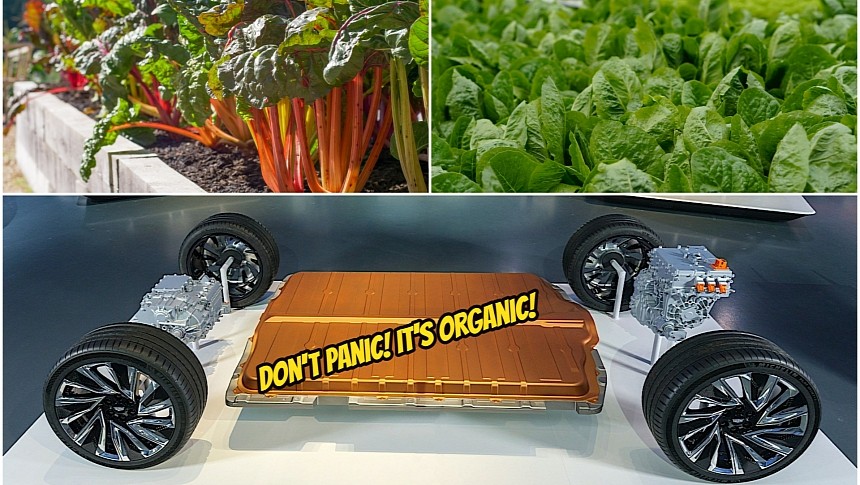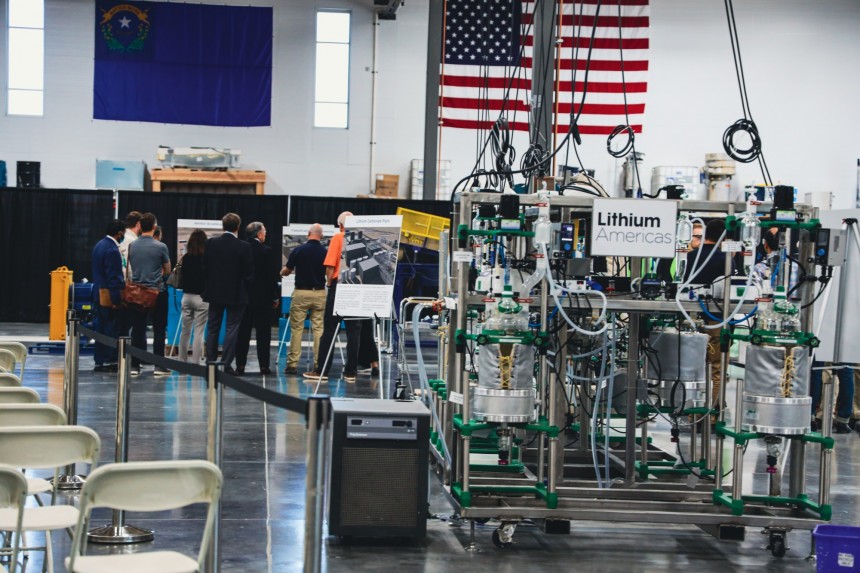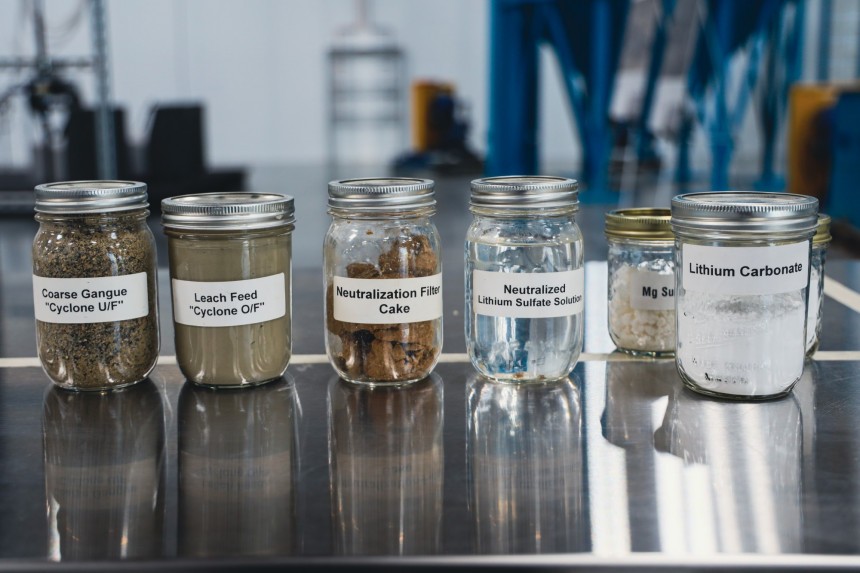Electric vehicles (EVs), mainly battery-electric ones, were touted as a much-needed solution for a greener future. But as time went by and they increased in popularity, people quickly learned about all sorts of challenges and geopolitical troubles EVs brought forward. Fortunately, people are creative, and researchers have been hard at work coming up with alternatives to mining. This one, for example, features something found in rhubarb and spinach.
Although some of us might own an EV, see one daily, or at least hear about these zero-emission cars creating problems for legacy automakers, most Americans still need to be more interested and knowledgeable in this respect.
Last year, just 6.1% of all the new cars sold were all-electric. That percentage is poised to grow in the upcoming years, but there's a slight hiccup - out of the estimated 250 million vehicles currently on American roads, around 1% are zero-emission. Thus, carmakers still have a long way to go before they see everyone driving something like the Tesla Model 3, the Rivian R1T, or the Ford Mustang Mach-E.
Fortunately, this slow adoption pace allows brands to figure out production before it's too late. High-voltage batteries in EVs require all kinds of metals and materials that are not abundant. That's one of the reasons why auto companies must get involved in mining or find partners that can help them avoid China's hegemony in this sector. Not because it would make EVs expensive but due to the Inflation Reduction Act (IRA) and its subsidies for those who make these energy storage units in the US.
General Motors is a good example in this regard. It figured out quickly that it needed more raw materials than others (because its newest EVs have some of the largest battery packs on the market) and partnered up with Canada's Lithium Americas to mine the Thacker Pass in Nevada.
However, that's still not good enough. EV makers or battery manufacturers cannot rely on mining alone to make the cells that go into these energy storage units. Not only does this activity destroy various places on Earth, but it also keeps EVs' carbon footprint (aka the amount of CO2 released into the atmosphere) higher than that of gas-powered cars. Considering our green ambitions, that's a no-no.
Happily, some companies like Tesla or Nissan have invested in recycling batteries. The former says it doesn't allow any of its energy storage units to end up in landfills, while the latter showed how cells can get a new slice of life by being reused.
However, recycling lithium (the main metal in high-voltage car batteries) is expensive. One reason for that is the fact that components are highly flammable. Get the recipe incorrect or approach the teardown with haste, and you might be in a lot of trouble very soon.
Nowadays, recycling Li-ion batteries is done by shredding everything. The result is mixed into a special powder, which then gets separated with the help of an acid. That's how lithium is isolated from cobalt, nickel, copper, and aluminum. The problem with this method is that many of the costly raw materials are lost in the process. On top of that, it only emits more CO2.
But there's a new solution in town! Researchers at Chalmers University of Technology in Sweden found that oxalic acid (also known as oxalate) can recover all the aluminum and 98% of the lithium used in batteries. The best thing about it? It's an organic acid found in plants like rhubarb and spinach.
Most commonly, it is used to remove rust and stains. The researchers shredded the batteries, put the powder in oxalate, and played around with the temperature and concentration. After much testing, they figured out that by reversing the classic hydrometallurgical process, they could filter waste and oxalic acid, leaving aluminum and lithium in the liquid.
That removes several purification steps from the traditional process and allows an impressive amount of raw material to be recouped.
The only thing they need to do now is to separate the aluminum from the lithium through a different process that must render similar positive outcomes. The researchers benefitted from Volvo's and Northvolt's help, per the Institution of Mechanical Engineers.
Let's hope major industry players like Redwood Materials or Ascend Elements will keep an eye on what the Swedes are doing here.
Last year, just 6.1% of all the new cars sold were all-electric. That percentage is poised to grow in the upcoming years, but there's a slight hiccup - out of the estimated 250 million vehicles currently on American roads, around 1% are zero-emission. Thus, carmakers still have a long way to go before they see everyone driving something like the Tesla Model 3, the Rivian R1T, or the Ford Mustang Mach-E.
Fortunately, this slow adoption pace allows brands to figure out production before it's too late. High-voltage batteries in EVs require all kinds of metals and materials that are not abundant. That's one of the reasons why auto companies must get involved in mining or find partners that can help them avoid China's hegemony in this sector. Not because it would make EVs expensive but due to the Inflation Reduction Act (IRA) and its subsidies for those who make these energy storage units in the US.
General Motors is a good example in this regard. It figured out quickly that it needed more raw materials than others (because its newest EVs have some of the largest battery packs on the market) and partnered up with Canada's Lithium Americas to mine the Thacker Pass in Nevada.
Happily, some companies like Tesla or Nissan have invested in recycling batteries. The former says it doesn't allow any of its energy storage units to end up in landfills, while the latter showed how cells can get a new slice of life by being reused.
However, recycling lithium (the main metal in high-voltage car batteries) is expensive. One reason for that is the fact that components are highly flammable. Get the recipe incorrect or approach the teardown with haste, and you might be in a lot of trouble very soon.
Nowadays, recycling Li-ion batteries is done by shredding everything. The result is mixed into a special powder, which then gets separated with the help of an acid. That's how lithium is isolated from cobalt, nickel, copper, and aluminum. The problem with this method is that many of the costly raw materials are lost in the process. On top of that, it only emits more CO2.
But there's a new solution in town! Researchers at Chalmers University of Technology in Sweden found that oxalic acid (also known as oxalate) can recover all the aluminum and 98% of the lithium used in batteries. The best thing about it? It's an organic acid found in plants like rhubarb and spinach.
That removes several purification steps from the traditional process and allows an impressive amount of raw material to be recouped.
The only thing they need to do now is to separate the aluminum from the lithium through a different process that must render similar positive outcomes. The researchers benefitted from Volvo's and Northvolt's help, per the Institution of Mechanical Engineers.
Let's hope major industry players like Redwood Materials or Ascend Elements will keep an eye on what the Swedes are doing here.

























